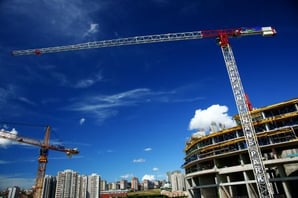Women in construction
 Construction is a historically male-dominated field. With women accounting for approximately 47% of the total workforce, supporting female construction workers is vital for long-term industry growth. According to data from the U.S. Bureau of Labor Statistics, women make up only 11% of the industry.
Construction is a historically male-dominated field. With women accounting for approximately 47% of the total workforce, supporting female construction workers is vital for long-term industry growth. According to data from the U.S. Bureau of Labor Statistics, women make up only 11% of the industry.
Although low, this percentage has been continuously increasing every year. In the spirit of Women’s History Month, let’s look at an overview of the history of women in the construction industry.
Historians have identified women working in the building trades as far back as the 13th century in Spain, England, France, and Germany. Women participating in heavy labor would not become socially acceptable until hundreds of years later. Because of the stigma around this, women were given low-skill jobs like ditch-digging and mixing mortar and were often paid half the rate of their male counterparts.
Fast forward six or seven centuries and you’ll find many notable female engineers and construction workers start to stand out. World War II resulted in women taking over construction industries while the men fought on the front lines. From welders and electricians to construction managers and building designers, women commanded the roles that used to exclusively belong to men. Then came the feminist movement of the ‘60s, and the rest is history.
Today, mortar-mixing is out and female leadership is in. Women in the construction industry earn 99.1% of what men make, as opposed to 81.1% of what men make on average in any other industry in the U.S. The modern construction sector is infinitely more equitable than it was in the past, but there is still work to be done to reduce gender bias in the workplace. Picture the iconic “men at work” signs and think of the message it may send. Girls need more exposure to hardworking women in construction to understand that they have as much of a right to be in the field as men.
While increased exposure is a large-scale issue, there are smaller changes that can be made to make construction a more welcoming and supportive space for all workers. Providing PPE that can fit sizes ranging from a small woman to a tall man is a good place to start.
There are numerous resources available to support and encourage women in construction:
- The National Association of Women in Construction
- Professional Women in Construction
- Women in Construction USA
- Groundbreaking Women in Construction
From a diversity and inclusion perspective, as well as an economic perspective, there are only benefits to recruiting more women into the construction industry. It’s time to level the jobsite.
Topics: construction industry
